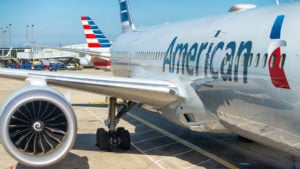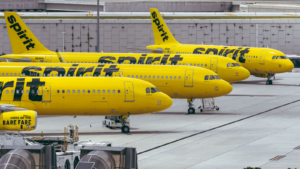Travel
Stock Market Crash Warning: Don’t Get Caught Holding These 3 Travel Stocks

Rising inflation pressures spooked equity markets in April. The S&P 500, for instance, shed more than 25% of its value, its worst month since last September. Moreover, The NASDAQ and Dow followed suit, with similar losses. Many would say that the current market scenario is the Fed’s undoing, with it initially supporting markets but now taking a more hawkish approach. Therefore, interest rates will remain elevated for a while, making it an opportune moment for investors to consider travel stocks to avoid.
Travel stocks are often categorized in the growth cyclical, a category that benefits immensely from an expansionary monetary policy. With the economy booming and deeper pockets, travel stocks tend to shine, offering superb upside for investors. However, that’s unlikely to pan out anytime soon, so it’s best to offload these travel stocks to avoid them.
Travel Stocks to Avoid: Carnival (CCL)
Source: JHVEPhoto / Shutterstock.com
Leading cruise line operator Carnival (NYSE:CCL) had an incredible run in the stock market last year. CCL stock gained a staggering 61% on the back of its blow-out operating results despite the macroeconomic headwinds. Alot of those gains were due to the risk-on sentiment in the stock market last year, which has faded away in recent weeks.
Nevertheless, there’s a lot to like about CCL and its long-term prospects. It recently reported another earnings smasher, comfortably beating estimates across both lines. Its first-quarter (Q1) sales jumped to $5.41 billion, 22% higher on a year-over-year (YOY) basis, while making impressive strides in regaining profitability later this year. Moreover, with a record $7 billion in deposits in Q1, it effectively pounced on a monumental wave season.
Though everything may seem fine and dandy with CCL, there are a few reasons it is an unattractive bet in the near term. Firstly, the stock has had an incredible run over the past year, and given the current situation with interest rates, the near-term upside seems limited. The stock is down 10% this month, and with it having to lap incredibly tough comps in the upcoming quarters, I expect more downside ahead. Moreover, the Baltimore Bridge disaster is expected to clip CCL’s 2024 profit by $10 million. Factor in all this, and CCL stock is still trading at an eye-watering 47.50 times trailing twelve-month GAAP earnings.
American Airlines Group (AAL)

Source: GagliardiPhotography / Shutterstock.com
American Airlines Group (NASDAQ:AAL) reported a lackluster Q1 2024 report last week, leaving a sour taste in its shareholders’ mouths. The world’s largest carrier reported a non-GAAP EPS of negative 34 cents, missing estimates by five cents. Moreover, its sales of $12.6 billion were roughly in line with consensus estimates. Consequently, AAL stock has been down almost 12% in the past month, lagging behind the broader market by a considerable margin.
AAL wasn’t the flashiest investment last year, ending in the red with a negative 1% return. Though it continued to deliver strong sales growth, it was lapping tough comps, among other headwinds. Moreover, it made healthy progress in its debt reduction goal, one of the biggest talking points in the airline sphere during the pandemic years.
However, I don’t expect the airliner to woo the market anytime soon with its quarterly reports. Analysts expect a 4.2% gain in its top-line in the upcoming quarter, with eight downward EPS revisions compared to four positive ones. Boeing’s (NYSE:BA) woes will likely have a sizeable impact on its financials. In fact, it followed the rest of its peers in cutting back on routes due to Boeing delays.
Spirit Airlines (SAVE)

Source: YES Market Media / Shutterstock.com
Spirit Airlines (NYSE:SAVE) is another low-cost carrier with limited upside potential. Its stock is down almost 78% year-to-date (YTD) and almost 27% just this month. Perhaps one of the main reasons for such a performance is the U.S. Justice Department’s decision to block its merger with JetBlue (NASDAQ:JBLU). Experts, including InvestorPlace’s Eddie Pan, believe that Spirit could consider bankruptcy and asset liquidation following the debacle.
Ironically, Spirit Airlines has seen its costs rise significantly quicker than its top-line growth. From 2019 to 2023, the company’s total sales grew by roughly 40% compared to its cost of revenues, which jumped 81%. Clearly, its business model hasn’t worked, which continues to weigh down its financial flexibility. It attracts a deplorable 3 on 10 Financial Strength rating from GuruFocus, with its Altman Z-Score firmly in the Distress Zone. Hence, SAVE is another airliner you’d want to avoid at this time.
On the date of publication, Muslim Farooque did not have (either directly or indirectly) any positions in the securities mentioned in this article. The opinions expressed in this article are those of the writer, subject to the InvestorPlace.com Publishing Guidelines.








